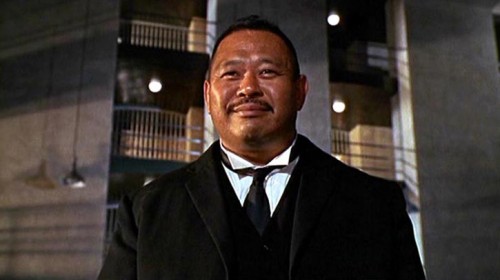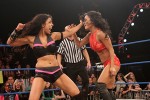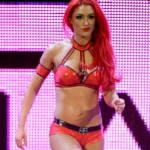Wrestling fans have been knee-deep in the “Reality Era” for nearly 7 years, which is an exceptionally long time for the WWE to stick to one standard of programming. Not since the “Golden Age” of the 1980’s has Vince McMahon committed to one style of promoting the way he has since the advent of the 2008 PG-generation. While I can’t foresee the WWE ever reverting to the swear-word-studded, beer-swilling genre that it helped to define in the 90’s, I do think there is change on the horizon, for sure. The creation and ensuing evolution of NXT, as well as an influx of independent talents has introduced an average sized competitor to a world formerly ruled by giants. Individuals like Daniel Bryan, Sami Zayn, Adrian Neville, Tyson Kidd, Seth Rollins, Finn Balor, and Hideo Itami are the future of the WWE. Fans might struggle to conceive how superstars totaling a mere 175 pounds could compete with the likes of John Cena and Triple H, but that’s where the suspension of disbelief comes in. The industry is getting smaller, everywhere you look professional wrestlers are shorter and leaner. Now more than ever the leader in sports entertainment has to rely on in-ring action to sell its product, and I think we could be on the cusp of a new era in the WWE. An era that caters to individuals not based on their marketability but on their wrestling ability.
It’s been a long time since any real change has come to the WWE in terms of the overall presentation. To put that aspect into perspective: the New Generation lasted from 1993 until 1997; The Attitude Era spanned the tail-end of ’97 through WrestleMania Seventeen in 2001; Ruthless Aggression began in 2002 and ended in 2007. The current “Reality Era,” officially kicked off in 2008, and is now the second longest running format the WWE has stuck to since the “Rock ‘n’ Wrestling Era.” There are those who clamor for a shift based solely on how long it’s been since they’ve seen anything different. While I am of course hungry for anything innovative, I’m rational enough to know that change won’t come unless there’s a catalyst. The dawning of every new day has always been the result of a major event: perhaps it was a certain Screwjob or the end of a particular television ratings war. The WWE, like any successful business, is interested in the bottom line in terms of where they stand to make the most money. When South Park and gangster rap were the rage in America, the WWF opted for an edgier ‘Attitude’ that helped them compete on a broader scale. When MTV opened its doors, the WWE was happy to expand upon their entertainment side so as to appeal to a wider audience. Until children and families cease to comprise the majority of WWE’s fanbase, they’re going to continue to cater to them.
I’m always reading Tweets regarding a return to the Attitude Era, which is simply never going to happen, for a myriad of reasons, perhaps the biggest is the current state of the world outside of the WWE Universe. The 1990’s were a period of individualism and dysfunction; Jerry Springer was among the highest-rated programs in a nation governed by a president whose legacy need only be defined by his sexual escapades. In contrast, 2014 is the age of DDP Yoga, Smart Cars and Phoenix University—a day defined by self-improvement. Though the addition of expletives and innuendo seems unlikely in the safety-wrapped world of today, but we could very well see something similar to what occurred as the Rock ‘n’ Wrestlers transitioned into the New Generation. The rise of younger talent in 1993 which constituted the birth of the New Generation, began in large part due to the steroid allegations against Vince McMahon and the trial that ensued. The vascular body builders of the 1980’s had become taboo poster boys for illicit drug-use, thus leading to a mass exodus of Rock ‘n’ Wrestling mainstays from the WWF. Out of the ashes emerged former tag team competitors, Intercontinental contenders and an endless supply of new wrestlers hungry for any opportunity they might receive. The shift in talent favored younger, sometimes smaller, unestablished stars as opposed to larger-than-life celebrity Superstars such as Hulk Hogan and the Ultimate Warrior. Former mid-carders like Bret Hart and Shawn Michaels became the leaders of the New Generation, exciting fans with a more intense variety of action each week via a new program entitled “Monday Night Raw.” With the top tier talents of NXT eager to break the glass ceiling and steal top billing from John Cena and Randy Orton, all of the elements appear to be aligned so that history has the chance to repeat itself.
But what in a world of commercialism and financial prosperity could stimulate such a switch in programming? Aside from an over abundance of highly capable talent waiting in the wings, the future of the WWE Universe may in fact depend on one of its largest elements—the fans. I think the people have the ability to change the product, and believe it or not, I think they already have to a degree. Live crowds seem more interested in putting themselves over than they are with marking out for their favorite superstars, which I find outwardly reprehensible. Chanting for “JBL” or “CM Punk” during a Diva’s match is tantamount to heckling any performer on any stage. But when used accordingly, constructive criticism from the crowd has been known to affect Creative decisions, and even change the coarse of events going forward. The most recent example was earlier in the year when fans were able to ransom their interest in the product in exchange for Daniel Bryan’s appearance in the main event at Wrestlemania 30. Even the creation of NXT in its current form was in some ways a response to work-rate fanatics who ridiculed the WWE’s main roster and their inability to wrestle, rather than perform.
It seems as though the WWE has always struggled, just the same as any promotion, to find their footing in a comfortable position that allows for them to deliver an equal balance of sports and entertainment. In 2002, both TNA and Ring of Honor erupted onto the scene, helping to satisfy the need for competitive professional wrestling in America. Since then, independent promotions of all sizes have come and gone, meeting with varying levels of success, and helping to create the closest thing to a territory system since 1984. This specific brand of independent wrestling has spawned its own fandom which is quite often far removed from the WWE Universe. In 2006, the WWE hired CM Punk who went on to become one of the biggest successes of the 2010’s. Perhaps it was the fan reaction to Punk that caused Stamford to take notice of more indie talents; not only were they superior workers, but they drew a niche audience that had otherwise been uninterested in the WWE product. The leader in sports entertainment was becoming more interested in signing high profile wrestlers working on the indie circuit, but lacked any structure in introducing them to a widely unaware audience. The WWE most likely launched the original NXT program due in part to signing the likes of Bryan Danielson and Low-Ki. The show helped to introduce other home-grown Superstars such as RyBack and even a “huskier” Bray Wyatt, but it was certainly centered around the biggest names involved. Bryan didn’t win the competition, but his program with the Miz was without a doubt the most memorable aspect of the first season, and perhaps the same can be said about “Kaval” being paired with LayCool in the second.
After one too many seasons, including an all-Diva’s NXT, fans grew bored with the Sci-Fi Channel series and wanted something else. The patrons of independent wrestling who the WWE had won due to hiring their favorite athletes didn’t want to watch them run around the ring holding a keg of beer. They wanted to see them wrestling on a weekly basis. During this time, Triple H was finalizing the details on what was to be the WWE Performance Center at Full Sail University. Originally conceived as a locally-televised farm territory to replace FCW, the Performance Center would be equipped with state-of-the-art athletic machinery and WWE-certified personnel. When it came time to do something about NXT, it was decided to repackage the former competition show as the WWE’s official minor league territory. The rumors regarding the ultimate goals of NXT suggest that only one in every twenty-five workers at the Performance Center is likely to become a WWE Superstar. That means everyone else is either going to be cut or are destined to become enhancement talents. I’ve long since held the notion that NXT should distance itself from the WWE as best it can, which would make for far more intricate storytelling.
In 1996, Eric Bischoff borrowed a Japanese concept and introduced American audiences to the NWO. If you remember, everything for two years was branded as “WCW/NWO presents…” There was a real effort made to define the New World Order as a completely separate entity from WCW. Their promos were produced differently, they had their own referee, and even attempted to pull off their own pay-per-view in 1997. In 2006, the WWE resurrected Extreme Championship Wrestling, and attempted to establish ECW as a rival to the WWE. Neither attempt was ever fully realized as neither ECW or the NWO managed to distance themselves far enough away from the main product. This is where NXT is at an advantage. Currently only available through streaming services in the United States, NXT has a fresh feel to it that doesn’t mimic Raw or Smackdown in the slightest. From the yellow ropes to the black canvas and the studio full of die-hard fans, NXT is the most innovative program the WWE has produced since “Shotgun Saturday Night.” Being featured on a different platform and introducing a virtually unknown talent pool has helped NXT define itself without relying on the pageantry we’re privy to every Monday night. But even if NXT was to exist on its own, stars like Sami Zayn and Adrian Neville didn’t didn’t trade in years worth of independent work to be confined to another minor league promotion. And there is the elusive catalyst.
Hideo Itami, Finn BalГіr, and Kevin Owens are without question three of the biggest MVP’s working at Full Sail University and will have all debuted within three months of one another. This is a unique situation with no fewer than six NXT competitors worthy of applying their craft on the main roster. The thought of debuting individually one after another seems sort of repetitive and lacks the intrigue that makes professional wrestling so enjoyable. I’ve been pleased with the NXT exhibition matches on the main roster programs and I think that could be the perfect way to set up an NXT Invasion. Now before anyone flies off the handle about how Nexus already invaded, let’s look at it realistically: NXT at the time was a WWE program filmed before and after TV Tapings. The show featured dozens of then-current WWE Superstars, announcers, and lukewarm crowds that just wanted to watch Smackdown. Sure, the initial attack on John Cena and the Straight Edge Society was an event unlike anything else we’ve ever seen. But at no point did I believe Wade Barrett or Michael Tarver had anything on their mind other than working the program to which they were assigned. But things might be different for the current incarnation of NXT should it’s workers decided to take action against the main roster.
There needs to be some sort of rift between the WWE and NXT superstars. Rather than cutting promos about how they’re better than John Cena, Zayn and the rest of his peers at the Performance Center need only continue stealing the show on every cable program they can. Given NXT has a minute audience when compared to Monday Night Raw, it’s safe to assume that there will always be large pockets of silence during any of these matches. Combined with JBL poking fun at the small-statured superstars as well as commercial breaks in the center of high spots, the wrestlers down in developmental might have a legitimate grievance to discuss. Continue with this pattern for a month, where everyone from Neville to Owens is introduced and then buried by both seasoned vets and WWE executives. Rather than addressing the bias against certain wrestlers, allow the fans to grow angry because Michael Cole doesn’t think KENTA is any good. Back in the late 90’s, the WWF showcased NWA exhibition matches that proved to be anything but popular with the live crowds. The wrestling was perhaps quicker and more refined than what you would see on rest of the show, but no one knew who the characters. And if they did, they had no reason to invest in a storyline with which they were unfamiliar. This is the same sort of situation, where there are hundreds, if not thousands of people in every arena completely unaware of who comprises the NXT roster. After months of being ignored by anyone that matters, whomever is ready to be called up should be ready to take over the WWE at a moment’s notice.
During yet another John Cena speech using the words “respect,” “all of you,” and “this business,” a WWE camera man is hijacked on the back loading dock of the arena. Nobody’s wearing any wrestling attire or masks this time; six or seven of the top NXT wrestlers appear in street clothes and carrying baseball bats as they break in through the back using the camera man’s key. I always questioned Nexus’ initial debut; why would an invasion happen in the arena? It has to start in the back, knocking down security guards and taking out WWE alumni in the locker room. As events unfold, commentators at ringside grow increasingly worried due to the way in which they previously spoke of these individuals. That is when they make their appearance in the arena with bull horns to spread the word that NXT is taking over. Why bullhorns? All kayfabe is thrown out the window as soon as the WWE production trucks allow these individuals on the microphone. In addition to that, keeping a cameraman in close proximity enables the invaders to film whatever they want and use the WWE employee in tow as collateral. Their message is clear: they’re the best wrestlers in the world and they refuse to be outshined by any “superstars.”
That little bit of fantasy booking is all we really need to arrive at a time when the WWE roster will be filled with NXT graduates and former independent sensations. Daniel Bryan always seemed to be at a disadvantage given his size. But that was in the “Reality Era,” when the WWE was in the business of sanctifying it’s public image. Now we’ve crossed into a period where the Undertaker is retired, John Cena makes sporadic appearances, and the heavyweight title scene is dominated by Seth Rollins and Dolph Ziggler. The WCW/ECW Invasion of the WWF in 2001 served as an unincorporated crossroads between The Attitude Era and Ruthless Aggression. The proposed NXT Invasion of 2015 could serve a similar purpose and help to set the company on a different path for the future.
Of course I realize that’s a healthy amount of wishful thinking, but at the end of the day the faithful fans of the WWE have always helped identify potential mega-stars. Wrestling fans around the world have developed a stronger voice than ever before due to the accessibility of the Internet, more specifically social media. If the outspoken members of the “IWC” had berated the WWE for more comedy matches instead of honest wrestling, who’s to say what NXT might have become? We probably won’t know whether or not there is a definitive new “era” in the WWE until it’s already long since been established. But what is certain is that there are numerous world class professional wrestlers waiting to be called up, and sooner or later, the entire WWE will be comprised of NXT graduates. When that day arrives—when the Big Shows and Mark Henrys of the world are forced to relinquish their spots to Prince Devitt and El Generico—we will know that we’ve arrived in the “Wrestling Era.”



















